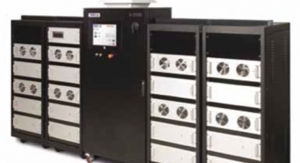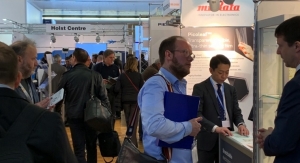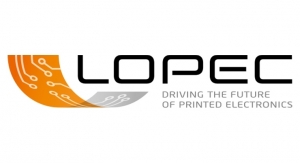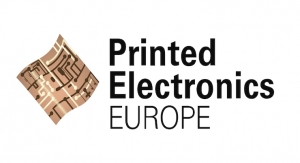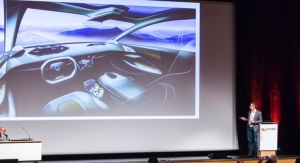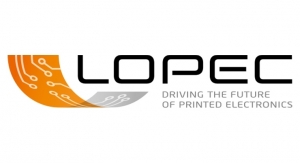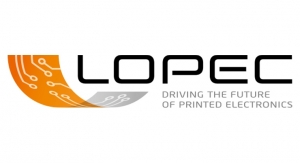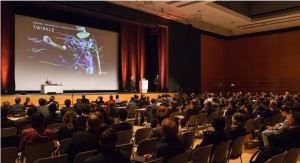David Savastano, Editor08.28.19
There is plenty of talk about how flexible and printed electronics can fit into the transportation field, with an emphasis on the automotive market. However, there are also opportunities in aviation; over the years, speakers from Boeing and Airbus have given presentations on how flexible and printed electronic s can play a role in airplanes.
During both LOPEC 2019, held at Messe Munich, and Printed Electronics Europe 2019, held in Berlin, Dennis Hahn, project leader, Airbus and Dr. Max Seißler of Altran, gave presentations on “Applications for Printed Electronics in the Aviation Industry.” They looked at how much could be saved using printed electronics, how far it is progressing and where the best opportunities could be.
Hahn began his presentation at LOPEC 2019 by asking how printing can affect the way an aircraft is made. Wiring is one key opportunity.
“We have 100km of wiring in an aircraft, and it is only to be expected that more wiring will be necessary,’ he noted. “You need three to five guys to carry it into the plane. No plane has the same wiring harness. It takes all the way from eight weeks to 12 months to get the wiring harness to the assembly line, and then changes come up. You can imagine that this is a very expensive process.”
By developing modules, Airbus can cut the lead time and weight dramatically.
“We came up with a concept to work with customers on modules,” Hahn reported. “We can significantly reduce lead time all the way down to six hours. It also allows us to do a higher degree of automation and include new functionalities. We also reduce the number of parts and weight – carrying 1kg for five years takes 20 tons of kerosene to fly around.”
Hahn said that signage inside the airplane also provides a potential for flexible and printed electronics. He pointed out that the exit and lavatory informational panel currently has 128 separate parts and takes a trained professional 4.5 hours to assemble. A printed electronics panel is far less complicated.
“We came up with a solution for the exit panel and whether the lavatory is occupied,” Hahn noted. “The current system weighed 1.7 kg and we reduced it by 400 grams. We designed it for a plastic foil with 10 parts, and built a machine that can automatically build the foil system. It cuts down the number of suppliers significantly. Currently we are that close to start our first prototype serialization process then reliability testing. We need to get confident with the technology so we can have further applications.”
Hahn reported that windows and the environment are potential applications for flexible and printed electronics.
“Windows are, from a weight and manufacturing point of view, a nightmare,” Hahn noted. “In order to make it safe, we have reinforcements around them, which adds weight. We built a future sidewall with RFID antenna, OLED lighting, temperature, sensor and humidity sensors and Wi-Fi antennas. With 250 temperature and humidity sensors, you can regulate the environment.”
Of course, the key to all of this is the ability to pass testing. After all, if a car fails, that is bad enough; if an airplane fails, the results can be catastrophic.
“It is a very harsh environment for any technology. It has to be proven that it meets our requirements,” Dr. Seißler noted.
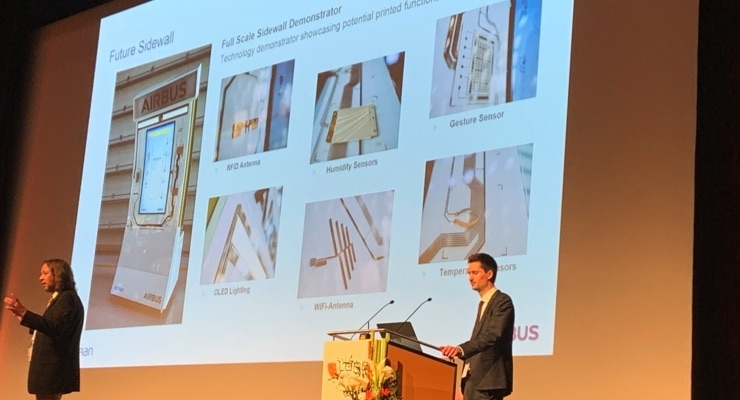
Dennis Hahn of Airbus, left, and Dr. Max Seissler of Altran talk about potential of printed electronics in aircraft during LOPEC 2019.
During both LOPEC 2019, held at Messe Munich, and Printed Electronics Europe 2019, held in Berlin, Dennis Hahn, project leader, Airbus and Dr. Max Seißler of Altran, gave presentations on “Applications for Printed Electronics in the Aviation Industry.” They looked at how much could be saved using printed electronics, how far it is progressing and where the best opportunities could be.
Hahn began his presentation at LOPEC 2019 by asking how printing can affect the way an aircraft is made. Wiring is one key opportunity.
“We have 100km of wiring in an aircraft, and it is only to be expected that more wiring will be necessary,’ he noted. “You need three to five guys to carry it into the plane. No plane has the same wiring harness. It takes all the way from eight weeks to 12 months to get the wiring harness to the assembly line, and then changes come up. You can imagine that this is a very expensive process.”
By developing modules, Airbus can cut the lead time and weight dramatically.
“We came up with a concept to work with customers on modules,” Hahn reported. “We can significantly reduce lead time all the way down to six hours. It also allows us to do a higher degree of automation and include new functionalities. We also reduce the number of parts and weight – carrying 1kg for five years takes 20 tons of kerosene to fly around.”
Hahn said that signage inside the airplane also provides a potential for flexible and printed electronics. He pointed out that the exit and lavatory informational panel currently has 128 separate parts and takes a trained professional 4.5 hours to assemble. A printed electronics panel is far less complicated.
“We came up with a solution for the exit panel and whether the lavatory is occupied,” Hahn noted. “The current system weighed 1.7 kg and we reduced it by 400 grams. We designed it for a plastic foil with 10 parts, and built a machine that can automatically build the foil system. It cuts down the number of suppliers significantly. Currently we are that close to start our first prototype serialization process then reliability testing. We need to get confident with the technology so we can have further applications.”
Hahn reported that windows and the environment are potential applications for flexible and printed electronics.
“Windows are, from a weight and manufacturing point of view, a nightmare,” Hahn noted. “In order to make it safe, we have reinforcements around them, which adds weight. We built a future sidewall with RFID antenna, OLED lighting, temperature, sensor and humidity sensors and Wi-Fi antennas. With 250 temperature and humidity sensors, you can regulate the environment.”
Of course, the key to all of this is the ability to pass testing. After all, if a car fails, that is bad enough; if an airplane fails, the results can be catastrophic.
“It is a very harsh environment for any technology. It has to be proven that it meets our requirements,” Dr. Seißler noted.

Dennis Hahn of Airbus, left, and Dr. Max Seissler of Altran talk about potential of printed electronics in aircraft during LOPEC 2019.


